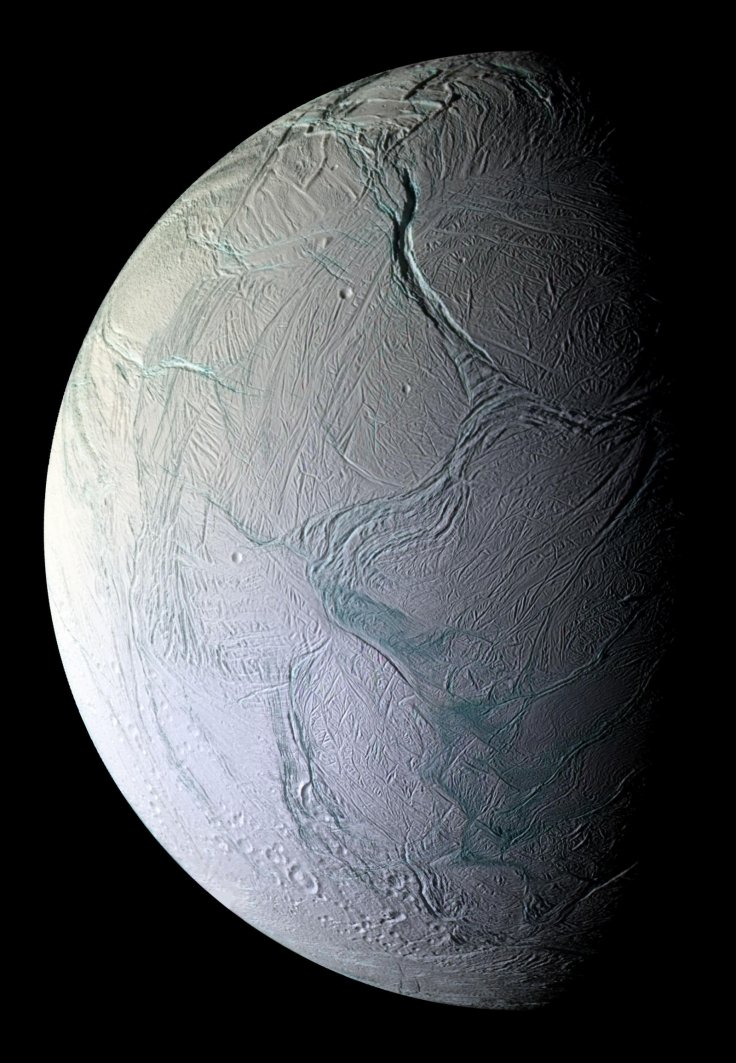
Scientists became shocked to see the results came out after the large organic molecules blasted into space on Saturn's moon Enceladus icy surface and now there is a possibility to find evidence of life somewhere else in space.
The new findings were published in the journal Nature, where researchers said that the samples collected by the NASA's spacecraft, Cassini showed that there are some evidence of carbon-rich substances as well as the basic requirements for life to sustain in Saturn's moon.
As reported by The Independent, Dr Frank Postberg from the University of Heidelberg, who led the research told that the complex organic molecules, which they found in the collected samples, "do not necessarily provide a habitable environment, but on the other hand, they are a necessary precursor for life."
A space scientist, Dr Christopher Glein, who is also specialised in extraterrestrial chemical oceanography said that the new discovery on Enceladus has shown that Saturn's moon is now considered as the only body apart from earth that has satisfactory elements for life.
In addition, he also said that previously scientists had only identified the simplest organic molecules containing a few carbon atoms, which was also very fascinating but the recent discovery on the distant moon has shocked the space science world.
Researchers studied the data collected by Cassini over the years before the spacecraft died in the Saturn's atmosphere. It flew close by Saturn's moons to collect all the information related to the evidence of alien life.
As per the early findings, researchers claimed that there would be an ocean beneath the thick ice sheets on the distant moon. Later scientists found signs of methane gas and then hydrogen. In addition, co-authored the study at Southwest Research Institute, Dr Hunter Waite mentioned that hydrogen is the source of chemical energy, which supports microbes to live in earth's oceans near hydrothermal vents.
In further addition, he said, "Once you have identified a potential food source for microbes, the next question to ask is 'what is the nature of the complex organics in the ocean?' This paper represents the first step in that understanding – complexity in the organic chemistry beyond our expectations."

Recently NASA also revealed that scientists found ingredients for life on the red planet Mars. Even though this collected data has more details than the samples collected from Enceladus, scientists believe that Saturn's moon, which is located at almost 1.272 billion km away from earth would be the most likely place to support life.
Dr Postberg said that now, after this finding in Enceladus, scientists have a specific place to look for the evidence of extraterrestrial life. He added, "We have a habitable environment there and we have the means to prove it to find whether there is actual life or not."
Search for alien life in Saturn's frozen moon could be challenging for the scientists, as the weather is so dramatic that it spits hot water and gas out in the space.
Prior to this recent discovery, a study done by Simon Rittmann from the University of Vienna, also suggested that there are many environmental conditions on Enceladus that are similar to earth. The research team tried to reproduce the "putative Enceladus-like conditions in the lab and to grow methanogens under these conditions." However, the ultimate results satisfied them and showed the chances to find extraterrestrial life on a different planet in the solar system.









